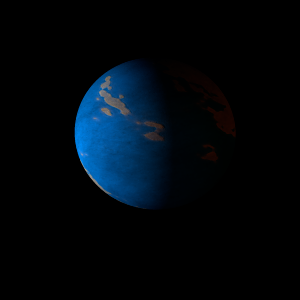|
|
Space Astro
|
Info for exoplanet "Tineso-halisaxa"
| Scientific (actual) data |
|---|
| Name | Kepler-522 b |
| Planet status | Confirmed |
| Radius | 0.616 |
| Orbital period | 38.5842 |
| Discovered | 2016 |
| Updated | 2021-02-05 |
| Tconj | 2455010 |
| Publication | Announced on a website |
| Detection type | Primary Transit |
| Alternate names | 2MASS J19123695+4404077 b, K00318.01, KIC 8156120 b, KOI-318 b, KOI-318.01, WISE J191236.95+440407.7 b |
| Star name | Kepler-522 |
| Right ascension | 288.15° |
| Declination | 44.07° |
| Mag j | 11.302 |
| Mag h | 11.092 |
| Mag k | 11.068 |
| Star distance | 749 |
| Star metallicity | 0.41 |
| Star mass | 1.54 |
| Star radius | 1.98 |
| Star age | 1.7 |
| Star temperature | 6392 |
| Star alternate names | 2MASS J19123695+4404077, KIC 8156120, KOI-318, WISE J191236.95+440407.7 |
| Wikipedia article | Kepler-522 b |
Back
| |
| Fictional info (?) |
|---|
| Suggested name | Tineso-halisaxa |
| Planet type | Cold planet |
|
This planet is mostly crawling with friendly terraformed insects called the "Meliaq Iso". They survive in deep valleys by hunting another species called Girloge. They are believed to be related to the Noetheus Lis but have 3 arms and vary in size from 25 to 51 cm. The Meliaq Iso are able to live at temperatures from -50 to -0°C but are killed by intense weather which is common near the poles. |
| Estimated population | 5000000000 |
| Atmosphere | Oxygen | 84% |
| Water | 15% |
| Methane | 0.57% |
| Carbon dioxide | 1.2E-5% |
| Atmospheric pressure | 100 bar |
 |
| No known satellites |
| Google search for Tineso-halisaxa |
|
Website by Joachim Michaelis
|
|
|
|